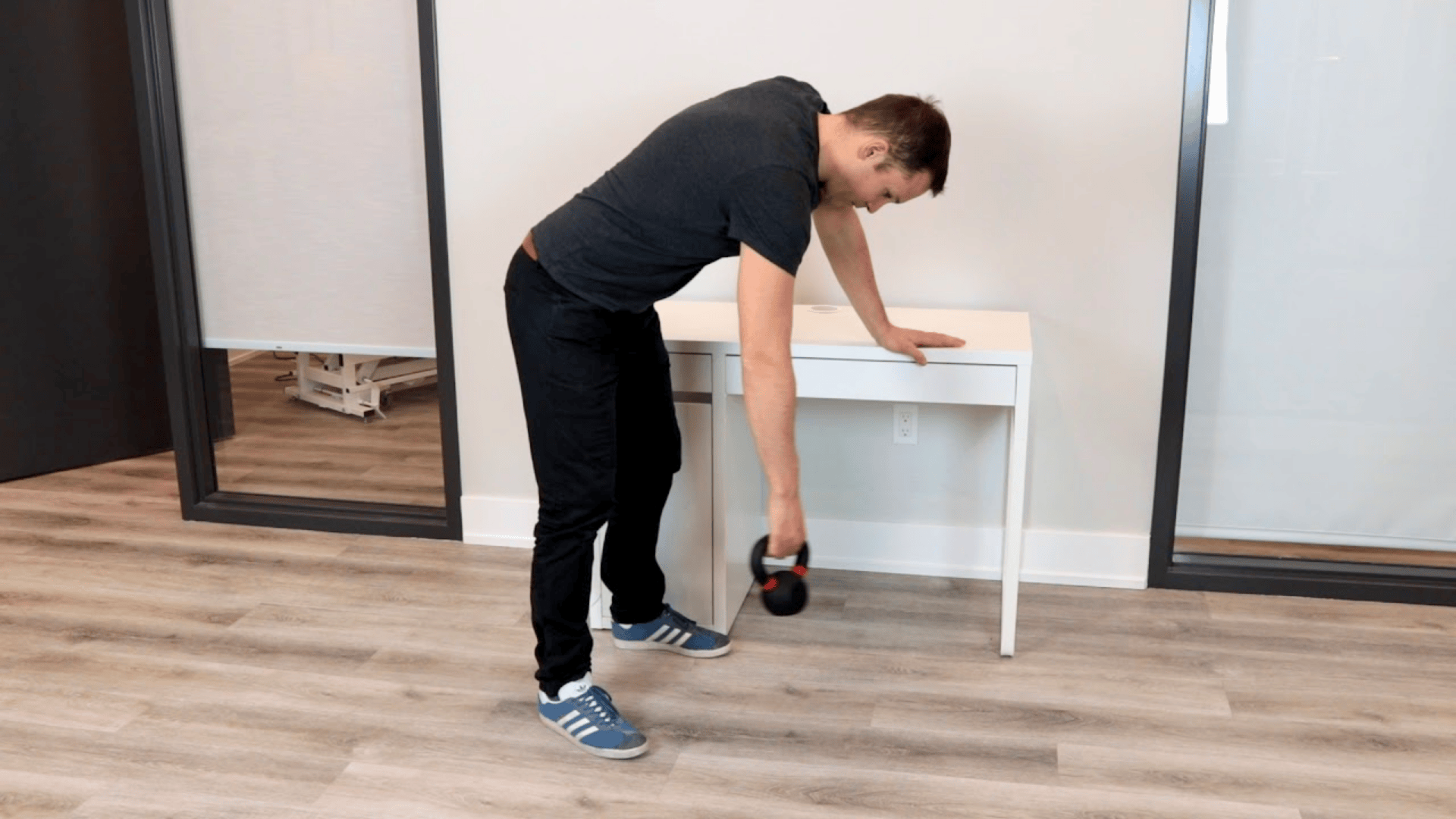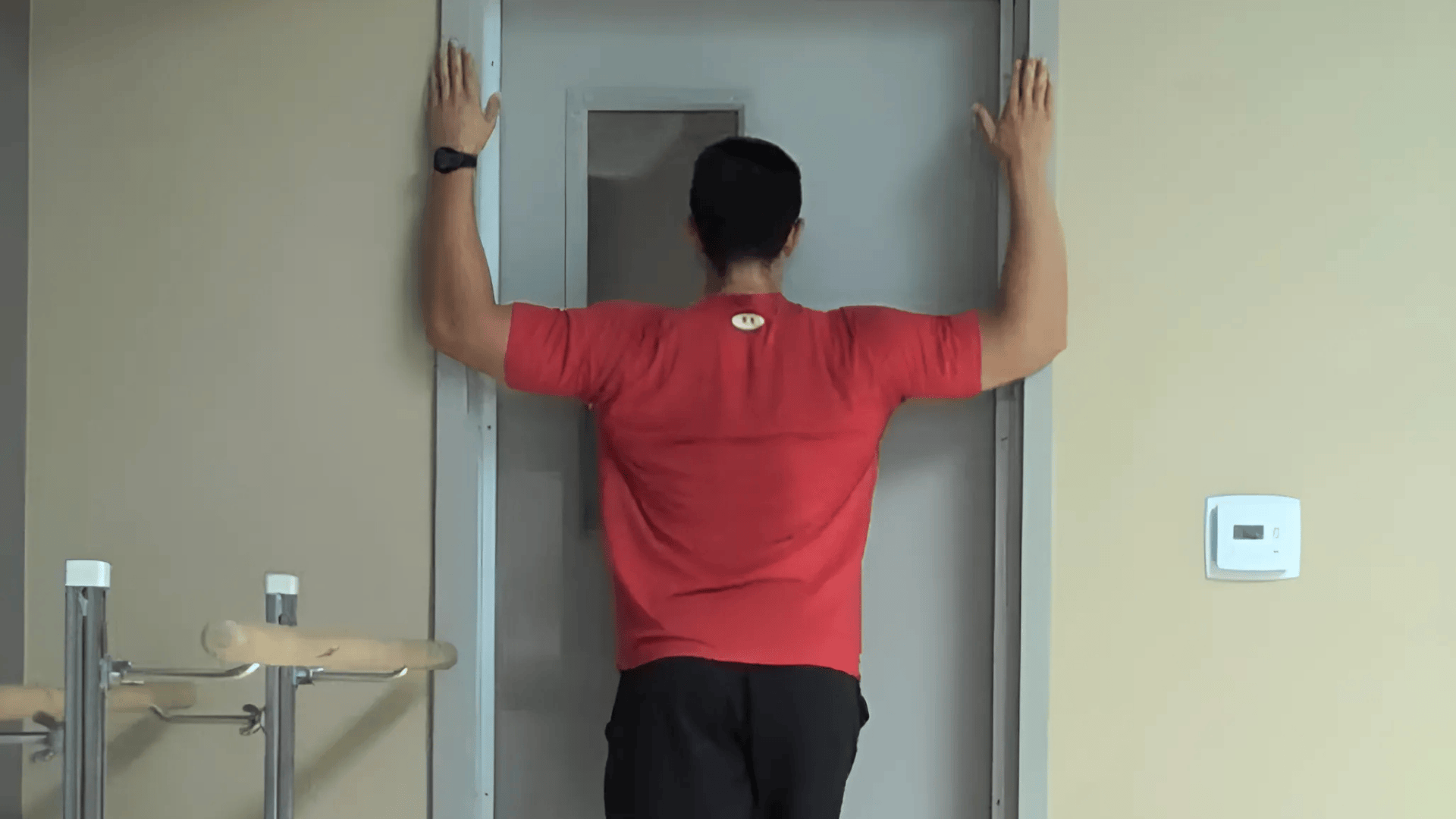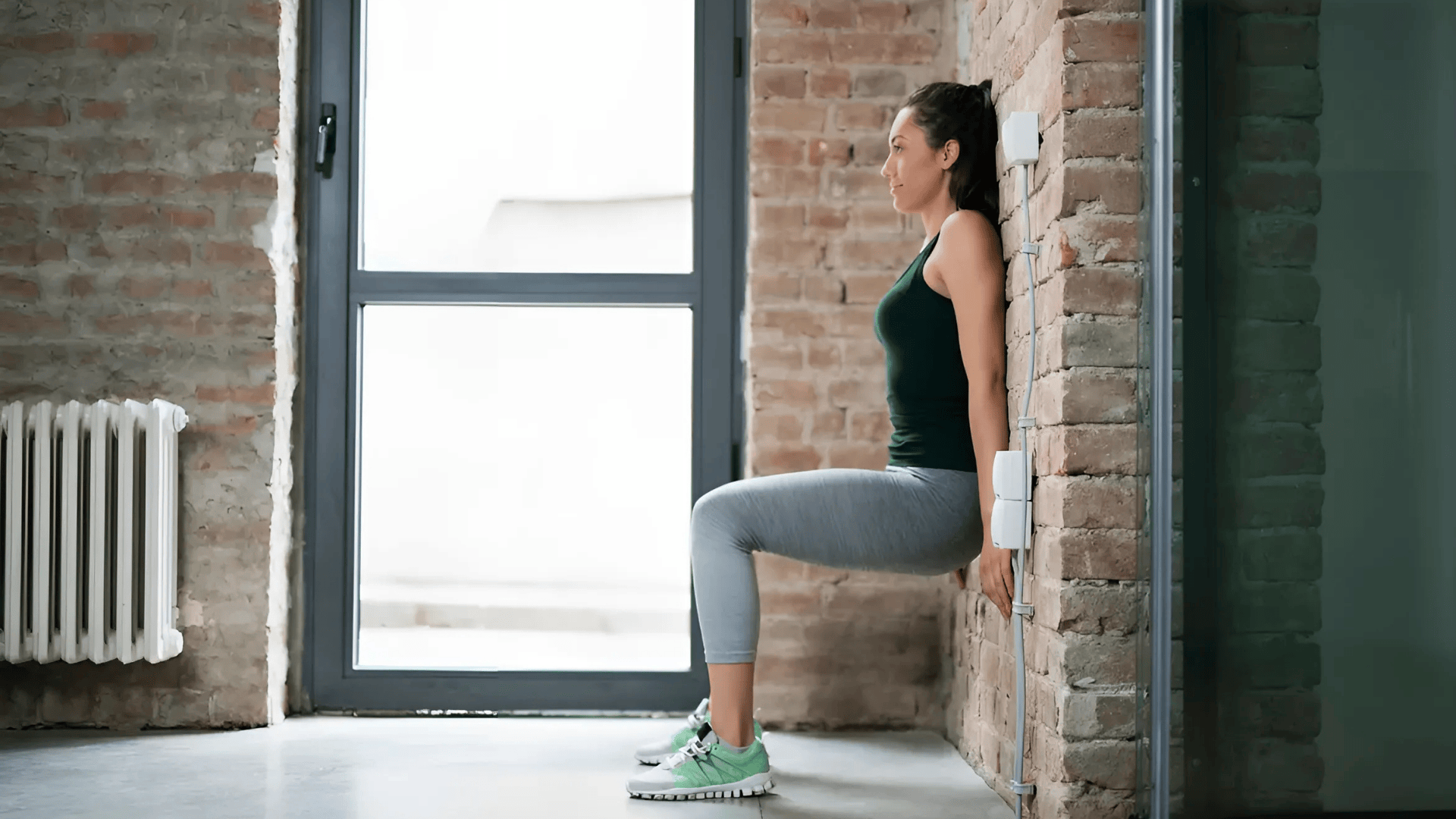I know how frustrating it feels to wake up with a sore shoulder after what should have been a restful night. If you deal with shoulder pain as a side sleeper, you’re not alone. It’s a common problem that can leave you stiff, tired, and searching for answers.
The good news is that there are simple reasons behind it, and even better, there are practical fixes you can start right away.
In this post, I’ll walk you through why it happens, the shoulder issues most often linked to it, quick relief ideas, a short morning routine that helps, and signs it’s time to see a clinician.
Why Side Sleeping Can Cause Shoulder Pain
Sleeping on your side can be comfortable, but it often comes with a downside: shoulder pain. When you lie in this position, much of your body weight presses on one shoulder. This puts pressure on the rotator cuff muscles and the small fluid sac, called the bursa, that cushions the joint.
Staying in the same spot for hours without moving makes the pressure worse. By morning, you may feel stiff, sore, or notice sharp pain when lifting your arm. People who don’t shift much in their sleep tend to feel it more.
That’s why shoulder pain from sleeping on your side is so common and can turn a restful night into an uncomfortable one.
Common Shoulder Conditions Linked to Side Sleeping
Many labels point to a similar story: irritated tissues, tight space in the shoulder, and poor mechanics. The usual suspects include:
- Rotator cuff tendinitis or small tears: Irritated tendons ache at rest and more with side pressure.
- Subacromial bursitis: An inflamed bursa hurts when you lie on that side or lift the arm.
- Shoulder impingement: Soft tissues get pinched when the arm lifts or when the joint is loaded.
- Osteoarthritis: Stiffness and deep ache that can worsen at night.
- Frozen shoulder (adhesive capsulitis): Marked stiffness and night pain, often in mid-life.
These problems can show as “shoulder pain from sleeping,” even if daytime use feels fine.
Is Side Sleeping Bad for Your Shoulders?
Side sleeping isn’t inherently bad for your shoulders. In fact, it’s often recommended because it supports spinal alignment and can help reduce snoring or acid reflux.
The problem comes when your shoulder bears too much weight without the right support.
Over time, poor pillow height, mattress firmness, or awkward positioning can increase strain on the rotator cuff and bursa, leading to soreness or stiffness in the morning.
| Pros of Side Sleeping | Cons of Side Sleeping |
|---|---|
| Supports natural spinal alignment | Extra pressure on the shoulder joint |
| Reduces snoring and sleep apnea risk | It can irritate the rotator cuff or bursa |
| Helps ease acid reflux symptoms | A misaligned pillow or mattress makes pain worse |
With the right adjustments, side sleeping can stay comfortable while protecting your shoulders from nightly strain.
How to Set Up Your Bed for Shoulder-Friendly Sleep
Getting your sleep setup right can ease pressure on your shoulders and help you wake up with less pain. The way your pillow, mattress, and extra supports are arranged plays a big role in keeping your body in balance through the night. Even small changes can bring noticeable relief.
Pillow height and material: Pick a pillow that keeps your head and neck in line with your spine. A memory foam or contour pillow can give steady support and stop your head from sinking too low.
Mattress firmness: A medium-firm mattress usually works best. It cushions your shoulder while still giving enough support to prevent sinking. Very firm or overly soft mattresses often make shoulder pain worse.
Support tools: Using a wedge or body pillow can stop you from rolling and help keep your shoulders in a neutral, relaxed position. These tools promote better alignment all night long.
A Gentle Morning Routine (5–8 Minutes)
Keep this sequence light and easy. Move within a pain-free range, and always breathe steadily. These exercises help loosen stiff tissues and activate supportive muscles so your shoulder feels better after sleep.
1. Pendulum (60–90 seconds)

Lean forward slightly and place your good arm on a stable surface like a table or chair. Let the sore arm hang relaxed toward the floor.
Begin making small circles and gentle swings, forward and backward. This exercise increases blood flow and gently mobilizes the shoulder joint without strain.
2. Shoulder Blade Squeeze (10 reps)

Sit or stand tall with arms relaxed at your sides. Slowly pinch your shoulder blades together, as if trying to hold a pencil between them.
Hold the squeeze for 5–10 seconds, then release. This move strengthens postural muscles that support the shoulders and reduce stress during sleep.
3. Cross-Body Stretch (2 × 20–30 seconds each side)

Raise one arm and bring it straight across your chest. Use your other hand to hold it at the elbow, gently drawing the arm closer.
Hold the position until you feel a stretch across the back of the shoulder. Switch sides. This helps ease tightness in the posterior shoulder muscles.
4. Doorway Pec Stretch (2 × 20–30 seconds)

Stand in a doorway with elbows bent at 90 degrees, forearms resting on each side of the frame.
Step forward with one foot until you feel a stretch across your chest and the front of your shoulders. Hold, then relax. This reduces forward rounding that can increase shoulder pain when lying on your side.
5. Wall Angels (10–15 slow reps)

Stand with your back, head, and hips against a wall. Raise your arms to a “goalpost” position (elbows bent at 90 degrees).
Slowly slide your arms upward, keeping them and your back close to the wall, then return to the start. This improves posture, mobility, and shoulder alignment.
Important: Stop immediately if pain sharpens or radiates down your arm. Mild pulling or stretching is okay, but sharp pain is a sign to pause.
Nighttime Relief for Shoulder Pain from Sleeping
Not everyone finds it easy to switch sleep positions, especially if you’ve been a side sleeper for years. If that sounds like you, the goal is to reduce the pressure on the painful shoulder while still keeping a comfortable routine.
One simple change is to sleep on the shoulder that doesn’t hurt. To keep your upper body steady, hug a long pillow so your top arm stays supported and doesn’t drop forward. You can also place a thin pillow across your chest to stop your shoulder from rolling inward.
Avoid tucking your arm under your head or lifting your elbow higher than shoulder level, since both moves add strain.
A small pillow placed behind your back can also help keep you from rolling onto the sore side. These small adjustments take pressure off sensitive areas and can help you rest with less pain through the night.
Best At-Home Remedies for Nighttime Shoulder Pain
If soreness still lingers at night, a few simple remedies can make sleep more comfortable:
- Ice: Apply for 10–15 minutes to calm inflammation.
- Heat: Use a warm pack before bed to ease stiffness.
- Natural aids: Try Epsom salt soaks or add anti-inflammatory foods like turmeric and omega-3s
How Long Should Morning Pain Last?
It’s common to wake up with a sore shoulder if you’ve been sleeping on your side, but the pain should not last all day. In most cases, mild stiffness or soreness eases within a few hours once you start moving. Gentle motion helps improve blood flow and reduces pressure on the joint.
If your pain keeps coming back every morning, lingers most of the day, or lasts more than two to three weeks, it’s a signal that something more serious may be going on. You should not ignore night pain for months at a time.
Early advice from a clinician can prevent bigger issues later.
When to See a Clinician
- Night pain: Disturbs sleep, often points to a deeper problem
- Pain lasting more than 2–3 weeks: Not just a temporary strain
- Weakness: Could mean a rotator cuff or nerve issue
- Grinding or catching: May suggest impingement or arthritis
- Past injury or fall: Old damage can return as chronic pain
- Swelling or lump: A Warning sign for joint or tissue problems
A clinician will usually begin with a clear history of your symptoms, followed by a focused exam and simple movement tests. Imaging, like ultrasound or MRI, is ordered only when truly needed, not for every sore shoulder.
This step-by-step approach helps find the real cause without unnecessary tests. Acting early gives you the best chance to manage pain, protect your shoulder, and get back to restful sleep.
Simple Form Fixes for Daytime Habits
Shoulder pain from sleeping on your side at night often has roots in how you use your body during the day. Long hours at a desk, poor posture, or carrying weight the wrong way can strain the joint without you noticing.
By making small, steady changes in your daily habits, you can ease the load on your shoulders and give it a better chance to rest comfortably at night. Here are some easy fixes you can start right away:
- Keep screens at eye level to avoid rounded shoulders.
- Use a backpack with both straps.
- Rest your elbows on the armrests when typing.
- Take 30-second movement breaks each hour.
- Do the five-minute routine above at lunch on tough days.
These small adjustments may not feel dramatic at first, but they help reduce hidden stress on your shoulders. Over time, good daytime mechanics add up, lowering the strain that often shows up as pain while you sleep.
Wrapping Up
Dealing with side sleeper shoulder pain can seem discouraging, but I’ve found that it doesn’t have to control the night. I understand how pressure on the joint, old injuries, or even tight muscles can leave you waking up sore.
Simple changes, such as adjusting pillow height, shifting sleep positions, or incorporating a brief morning routine, can help ease strain and bring steady relief over time.
If you face this kind of shoulder pain, don’t ignore it or push through sleepless nights. Small adjustments often help, but if pain keeps waking you or limits your day, reaching out to a clinician is the safest step.
For more practical tips and routines you can start today, check out the other posts on the website!





